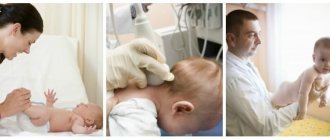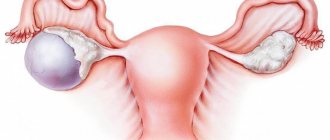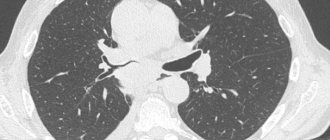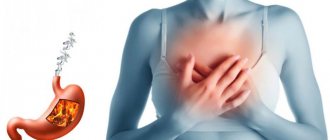Kraurosis of the vulva is a pathology characterized by dystrophic changes in the skin and mucous membrane of the external genitalia. The problem often appears due to the natural aging of the body or disrupted processes of the endocrine system.
Some doctors consider kraurosis to be one of the types of lichen sclerosus. However, most scientists are against such a classification, since dystrophic changes have specific symptoms. Moreover, processes leading to oncology often occur in the affected tissue. That is why the disease is considered a precancerous condition.
Etiology
A number of external and internal factors contribute to the development of pathology:
- Hypofunction of the thyroid gland, ovaries, adrenal cortex;
- Traumatic brain injuries leading to inflammation or other disorders of the pituitary gland and hypothalamus;
- Surgical interventions associated with the removal of parts or entire organs of the genitourinary system;
- Violation of bioelectrical activity of the brain;
- Short reproductive period (refusal of sexual activity);
- Lack of pregnancy, childbirth;
- Obesity;
- Diabetes;
- Frequent sexually transmitted infections;
- Traumatization of the external genitalia;
- Chronic inflammatory processes of the genitals.
Doctors often observe the appearance of stress, depression, and other psycho-emotional disorders in a patient against the background of developing symptoms of kraurosis.
If the body is severely affected, several systemic diseases develop at once; kraurosis of the vulva is possible in women of reproductive age: from 30 years.
Skin and external genitalia
The female reproductive organs include the breasts, vulva, ovaries, uterus, and other pelvic structures.
The external genitalia (vulva) are located in the urogenital area. These are the vagina, urethra, glands, clitoris, labia majora and labia minora. The main functions of the vulva include transporting sperm to the fallopian tubes and excreting urine through the urethra. Due to the location of this anatomical area, some are subject to adverse effects such as infections and injuries. The skin of the female external genitalia is composed of three sections. The functions of the outer integument include protecting internal organs from external influences, thermoregulation and sweating. Diseases of the skin of the vulva occur due to external and endogenous factors, including invasion of pathogenic microorganisms, metabolic disorders and immune pathologies.
The structure of the skin of the vulva:
- The epidermis is the outermost region formed by stratified keratinizing epithelium. Dead cells in the superficial layer perform a barrier function, while the basal layer is necessary for tissue regeneration.
- The dermis is the middle layer, which includes glands, hair follicles, muscle fibers and blood vessels.
- Subcutaneous tissue, mainly formed by adipose tissue. This section of the skin of the vulva protects internal organs from mechanical stress and temperature changes.
The mucous membrane of the external genitalia has a different structure. The squamous epithelium in this area does not keratinize. The presence of a large number of glands is necessary for the production of mucus. This substance promotes immune defense and facilitates the process of copulation. The mucous membrane and skin of the vulva contain components of the immune system.
Symptoms and classification
Signs of pathology depend on the stage of the lesion:
- First. It is characterized by initial disturbances in blood supply and changes in the skin. The patient notices a slight tingling sensation in the perineal area. Possible swelling and redness. Then there is a burning sensation and itching. Sometimes during sexual arousal, lubrication is completely or partially absent.
- Second. The damaged tissue thickens and becomes keratinized. Pigment spots appear and the skin peels off. The labia majora, clitoris, and labia minora gradually become deformed. Burning and itching become intolerable and intensify after intimacy or personal intimate hygiene procedures. Working capacity is impaired, even in a calm state the woman does not find peace. Scratching and bruising appear in the perineum.
- Third. Complete atrophy of the labia, they resemble dense ridges, there is no anatomical distinction. The vestibule of the vagina decreases, sometimes complete fusion and obliteration occur.
Already at the second stage, a woman’s intimate life becomes impossible. Because of this, problems in the emotional sphere develop even more.
Frequently asked questions about vulvar kraurosis
What causes kraurosis of the vulva?
The exact causes of the disease have not yet been established. It is assumed that viruses and infections, hormonal changes, disruption of the endocrine system, and autoimmune processes can serve as trigger factors.
How can I tell if I have vulvar kraurosis?
The main symptoms of the disease are itching, dryness, pain in the vestibule of the vagina, tightening of the skin of the perineum. Over time, the clitoris becomes smaller, the labia minora becomes thinner, the entrance to the vagina narrows, and the tissues atrophy.
Is it possible to cure lichen sclerosus?
The disease cannot be completely cured, but properly selected therapy can eliminate unpleasant symptoms and improve a woman’s quality of life.
Diagnostics
At the initial stage, kraurosis of the vulva is determined only with the help of instrumental diagnostics: with colposcopy, which magnifies the image being examined several tens of times. If the pathology is already well developed, an experienced gynecologist will notice changes already when examining the patient in the chair.
For additional research, doctors prescribe:
- Smears for cytology. A common event when visiting a gynecologist. However, in this case it is considered mandatory, since it helps to determine the onset of oncology development.
- PCR test for detecting HPV (Human Papilloma Virus) and other pathogens.
- General, biochemical blood tests, glucose level measurement. Determine hormonal levels and blood quality. Helps identify the cause of pathology at an early stage.
- Urine tests. Indicate infectious processes in the body, disrupted metabolic processes.
- Histology of particles of affected areas of skin and mucous membranes. Required to detect cancerous or mutated cells.
It is important to differentiate the disease from vaginitis, neurodermatitis and other pathologies in time.
Differential diagnosis
Differential diagnosis in the early stages should be carried out with the following diseases [1, 2, 13-15]:
- with neurodermatitis - the epithelium is thickened, compacted, dry, the skin pattern is enhanced with inflammatory papules of a brownish-pink color, the skin is hyperemic, shagreen-like, itching appears and on other parts of the body;
— vitiligo is characterized by a lack of pigmentation, sometimes mild itching, and no atrophic changes;
- for lichen planus - multiple grouped papular rashes with atrophic changes or sclerosis with the formation of keloid-like scars;
- with diabetes mellitus - severe itching of the vulva, the tissues of the external genital organs are swollen, have a “doughy” consistency, and are sharply hyperemic.
As a chronic inflammatory dermatosis with a long course of cycles of “itching-scratching-itching” and the formation of scars, SALV is a triggering factor for carcinogenesis or contributes to it. Apparently, dysregulation of immune processes also predisposes to the development of vulvar malignancy.
Treatment
One of the initial measures is the elimination of irritating factors, careful care of the vulva, treatment of secondary infections, local use of estrogens, which prevents atrophy of the vulva and vagina. This consists of following a diet (excluding spicy, salty, sweet foods, caffeine-containing products, alcohol) and intimate hygiene rules (limiting/excluding soap-containing products, deodorants, synthetic underwear, pads, tampons). For severe manifestations of itching, desensitizing therapy and sedatives are recommended [2].
The most widely accepted and recommended gold standard treatment for PALS is topical application of ultrapotent corticosteroid ointments [16], especially clobetasol propionate 0.05% ointment. The anti-inflammatory properties of clobetasol are most effective in the treatment of SALV, which is reflected in the reduction of inflammation and the prevention of progression of the condition and subsequent scarring. Topical ultrapotent corticosteroids are first-line therapy in the treatment of SALV (mometasone furoate, clobetasol proprionate (Ib, A). Clinical guidelines published in 2014 by the American Association of Child and Adolescent Gynecologists suggest the use of highly active glucocorticoid drugs in the long term as first-line drugs mode.They have the following effects:
- anti-inflammatory effect;
- antihyperplastic effect on the proliferating superficial layers of the skin;
- antiallergic, local analgesic and antipruritic properties;
- inhibitory effect on the functions of cellular and humoral immunity.
Summarizing recommendations for the treatment of SALV in children, taking into account the level of evidence, American colleagues presented them as follows:
1. Therapy in patients with SALV should begin with the use of highly active glucocorticoid drugs. Level II-2 B
.
2. There is limited data justifying the possibility of using immunomodulators both when treatment is ineffective and when patients refuse medications with glucocorticoids. Level II-3 B.
3. SALV should be suspected in children if there are complaints of various disorders of urination and defecation, including dysuria and dyschezia. Level C
.
In patients with SALV, it is necessary to exclude autoimmune diseases. It should also be noted that the diagnosis of SALV in children and adolescents does not necessarily require a vulvar biopsy. A biopsy of the skin of the vulva can be performed only if there are areas of the skin of the vulva and perianal area suspicious for atypia and/or with persistent resistance to therapy.
Patients with SALV require mandatory monitoring every 6-12 months to assess complaints, exclude changes in the architecture of the vulva and perianal area, and also to prevent the possible risk of malignancy [6].
As already noted, in the treatment of SALV, super-potent corticosteroids clobetasol or halobetasol in the form of 0.05% ointments are used. Because relapses can be frequent, prolonged, and can lead to atrophy and scarring, long-term maintenance therapy is recommended and is considered safer. Since there are no randomized controlled studies comparing the potency of steroids, the frequency of use and duration of treatment for each patient is selected on an individual basis. According to the results of a study by M. Gurumurthy et al. [17] reported that in a trial of clobetasol propionate ointment, complete remission was achieved in 66% of patients and a partial response to treatment was obtained in 30%. The scars did not progress. Conversely, there was no improvement in 75% of patients without treatment, and progression of scars was observed in 35% of women [17].
Depending on the severity of the clinical effect, modern topical corticosteroids (TCS) are divided into four groups [3, 18, 19] (Table 1):
Table 1. Current topical corticosteroids
- weakly active drugs (hydrocortisone 1%, prednisolone 0.5%, fluorocinolone acetonide 0.0025%);
- drugs of moderate action (alclomethasone dipropionate 0.05%, betamethasone valerate 0.025%, clobetasol butyrate 0.05%, deoxymethasone 0.05%, flumethasone pivalate 0.02 and 2%);
- potent drugs (betamethasone valerate 0.1%, betamethasone dipropionate 0.025 and 0.5%, butesonide 0.25%, fluorolorolone acetonide 0.025%, fluorcinoid 0.05%, fluorcinolone acetonide 0.025%, triamcinolone acetonide 0.02, 0 .1% and 2%, methylprednisolone aceponate 0.1%, hydrocortisone 17-butyrate 0.1%, mometasone fluorate 0.1%);
- drugs with very strong activity (clobetasol propionate 0.05%, difluorocortolone valerate 0.05%, galcinonide 0.1%).
Corticosteroids include halogenated (fluorinated) and non-halogenated ones [18-20]. Fluorinated corticosteroids (dexamethasone, betamethasone, flumethasone, triamcinolone, clobetasol, fluticasone, fluocinolone, flumethasone), as a rule, have greater anti-inflammatory activity, but more often lead to side effects. Non-halogenated corticosteroids include prednisolone derivatives (mometasone fuorate, methylprednisolone aceponate, hydrocortisone acetate and hydrocortisone 17-butyrate) [3, 20].
The mucous membranes of the vulva are relatively resistant to steroids, which suggests using ointments with maximum steroid potency to achieve a good effect. For 2-3 months they are applied daily, then 3 times a week in a thin layer on the vulva. In the circumference of the anus, where the skin is thinner, the ointment is applied daily for 4 weeks, followed by a transition to three times a week, and later - once or twice a week. The effectiveness of treatment is evidenced by a significant reduction in the number of cracks, erosions, hemorrhages and thickened white lesions. Even with effective treatment, they do not always disappear completely.
Various dosing regimens can be used. One of the most common is the daily use of high and maximum potency steroids: once a day for 3 months. In children, to avoid skin atrophy, TCS is used weekly for 3 months.
The use of TCS twice daily has additional benefit in the onset of lichen sclerosus. Proactive maintenance therapy with twice-daily mometasone furoate ointment 0.1% is effective and safe in maintaining remission and may help prevent the occurrence of malignant changes (Ib, A). The use of 30 g of the maximum potency steroid should continue for 3 months.
In postmenopause, long-term, for 6 months, use of corticosteroids of maximum activity is necessary. Within 12 weeks, in 77-90% of observations, it is possible to achieve significant improvement and disappearance of complaints, and in 23% of observations, complete disappearance of skin changes. Long-term treatment allows you to maintain remission of the disease for a long time. The patient should be monitored throughout her life. For thickened, hypertrophied, treatment-resistant lesions, administration of triamcinolone into them can be effective [1]. The use of TCS in combination with antibacterial and antifungal agents, such as gentamicin or fusidic acid and nystatin or azole antifungals, may be advisable when a secondary infection occurs. They can be used for a short period of time to eliminate infection (IV, C).
An allergic reaction to any corticosteroid ointment may occur after prolonged use. It should be taken into account that TCS can change the manifestations of some skin diseases, which can complicate the diagnosis. In addition, the use of TCS may delay wound healing [21].
When carrying out long-term local corticosteroid therapy in the anogenital area, serious side effects are detected:
- skin thinning;
- “rebound” reaction, which occurs when therapy is suddenly stopped and manifests itself in the form of dermatitis with intense redness of the skin and a burning sensation;
- formation of striae;
— development of fungal infections;
- suppression of adrenal function as a result of systemic absorption.
According to research results [2], it has been proven that all side effects resolve quickly as the activity of topical corticosteroids decreases and the frequency of their use.
The selection of treatment tactics for SALV is based on theoretical assumptions. Therapy for patients suffering from SALV is associated with polypharmacy, as it should help simultaneously eliminate the phenomena of atrophy, hyperkeratosis, reduce microcirculatory disorders, inflammation, and improve the healing of erosions on the skin of the vulva and perineum. However, the inappropriate use of antiseptics, antibiotics, antiviral and other groups of drugs often increases the activity of the pathological process and the spread of SALV. In case of lichen sclerosus, long-term observation is necessary to prevent increasing scarring and early detection of malignant neoplasm, the risk of which is not great, but real. As a rule, treatment leads to long-term remission. Its absence is a reason to doubt the diagnosis. A possible complication is contact dermatitis as a reaction to local treatment or excessively careful hygiene, infection, or the development of vulvar cancer. The ineffectiveness of local corticosteroid therapy is often associated with a violation of the patient's regimen, including due to misunderstanding or the inability to fully apply the ointment due to obesity or arthritis. Scars can be painful.
According to the European guideline for the management of vulval conditions 2016, patients with VALV require treatment [21]. About 10% of patients are not pruritic but have clinical signs of lichen sclerosus and should also be treated (IV, C).
In recent years, there has been a debate among specialists about the need to continue further treatment while relieving the initial symptoms. This is due to the fact that there is no data on disease activity at that time. However, it is indicated that SALV can progress further and lead to scarring, despite the lack of symptoms after prophylactic treatment, patients are indicated for continuous therapy for many years to prevent progression (IV, C).
A 5-year follow-up period showed that continuous treatment with an individually selected corticosteroid prevented the progression of symptoms, further scarring and the development of carcinoma, respectively, in 58% of cases versus 93.3%, 40% versus 3.4%, and 0% versus 4. 7% [21].
One of the representatives of the modern generation of TCS is the domestic combination drug for external use - tetraderm (Table 2).
Table 2. Composition of tetraderma cream for external use According to its pharmacological action, it has anti-inflammatory, antibacterial, wound-healing, antifungal, and glucocorticoid effects.
Pharmacodynamics
The activity of the drug is due to the pharmacological properties of the components included in its composition.
Gentamicin is a broad-spectrum antibiotic from the aminoglycoside group. Has a bactericidal effect, active against gram-negative microorganisms: Pseudomonas aeruginosa, Aerobacter aerogenes, Escherichia coli, Proteus vulgaris, Klebsiella pneumoniae
;
gram-positive microorganisms: Staphylococcus aureus
(coagulase-positive, coagulase-negative and some strains producing penicillinase).
Dexpanthenol is a derivative of pantothenic acid. Stimulates skin regeneration, normalizes cellular metabolism, accelerates mitosis and increases the strength of collagen fibers. Penetrates into all layers of the skin. It has a weak anti-inflammatory effect.
Mometasone is a synthetic CS that has a local anti-inflammatory, antipruritic and anti-exudative effect, induces the release of proteins that inhibit phospholipase A2 and lipocortins, which control the biosynthesis of inflammatory mediators (prostaglandins and leukotrienes, cellular inflammatory mediators) by inhibiting the release of their common precursor - arachidonic acid.
Econazole is a synthetic imidazole derivative. It has an antifungal and antibacterial effect, inhibits the biosynthesis of ergosterol, which regulates the permeability of the cell wall of microorganisms. It is easily soluble in lipids and penetrates well into tissues; it is active against dermatophytes Trichophyton, Microsporum, Epidermophyton,
yeast-like fungi of the genus
Candida, Corynebacterium minutissimum,
as well as
Malassezia furfur (Pityrosporum orbiculare)
, which causes pityriasis versicolor, and some gram-positive bacteria (streptococci, staphylococci).
Indications for use of the drug Tetraderm
Treatment of dermatoses of inflammatory origin with concomitant bacterial and mycotic infection or a high probability of secondary infection (simple and allergic dermatitis, atopic dermatitis (including diffuse neurodermatitis), limited neurodermatitis, eczema, dermatomycosis (dermatophytosis, candidiasis, pityriasis versicolor), especially when localized in the groin area and large folds of skin; simple chronic lichen (limited neurodermatitis).
Directions for use and doses
Externally.
The cream is applied to the affected areas of the skin in a thin layer, gently rubbing, 2 times a day until a positive clinical result is achieved. The duration of treatment is individual, depends on the size, location of the lesion and the severity of the disease and is usually 1-2 weeks. It is not recommended to use Tetraderm for more than 4 weeks.
Second-line therapy for SALV
Topical calcineurin inhibitors (TCIs) - pimecrolimus, tacrolimus - have a dermatotropic, immunosuppressive, anti-inflammatory local effect, specifically bind to the cytosolic receptor macrophilin-12 of T-lymphocytes and inhibit calcium-dependent phosphatase - calcineurin. Currently, TICs are recommended as second-line therapy for SALV. Pimecrolimus cream 1% is an immunosuppressant that inhibits T cell activation by blocking the transcription of early cytokines, and thus significantly reduces the itching, burning and inflammation associated with SALV. In addition, it prevents the release of pro-inflammatory cytokines, mediators of inflammation from mast cells in vitro
in response to stimulation by IgE antigen, does not affect keratinocytes, fibroblasts and endothelial cells.
Although TCIs can provide effective symptomatic relief, topical clobetasol is superior to pimecrolimus in reducing inflammation and improving clinical symptoms. However, pimecrolimus cream has a more acceptable safety profile and does not cause skin atrophy, although its use is associated with an increased risk of complications due to suppression of local immunity. As a result, TCI should be administered under the supervision of a specialist who can monitor the potential risk of malignancy of SALV. Given the proven effectiveness and safety of topical corticosteroids, experts agree that TICs should be reserved for cases of SALV not responding to topical corticosteroids [2].
TIC is used externally 2 times a day, applied in a thin layer to the affected areas of the skin and gently rubbed until completely absorbed. Treatment is continued until symptoms disappear completely. At the first signs of relapse, therapy should be resumed. If symptoms persist for 6 weeks, the patient's condition should be re-evaluated.
The most famous forms of TEC:
1. Tacrolimus - Protopic ointment 0.03 and 0.1%. Undesirable effects of this drug include: burning and itching sensation, redness, pain, irritation, rash at the application site, development of folliculitis and acne. Isolated cases of malignancy (skin and other types of lymphomas, skin cancer) have been recorded.
2. Pimecrolimus - Elidel cream 1%. Side effects include a burning sensation at the site of application of the cream, the development of impetigo and skin infections, rhinitis, and urticaria.
The most relevant seems to be 0.03% tacrolimus ointment for the effective treatment of children with anogenital lichen sclerosus 2 times a week, while reducing relapses is possible (IIIA, B). A comparison of pimecrolimus (1% cream) and clobetasol propionate (0.05%) cream showed an improvement in the symptoms of itching, burning, pain 12 weeks after the onset of vulvar lichen sclerosus, while clobetasol was used to quickly relieve the inflammatory process (Ib, A) . Other studies of pimecrolimus showed that 42% of patients were in “complete remission” after 6 months of use (IIb, B). Local irritation was the most common side effect with tacrolimus and pimecrolimus. The long-term risks of TIC use still need to be studied, as there are concerns about the possibility of an increased risk of malignancy due to local immunosuppression with long-term SALV therapy [21].
Emollients
One of the important components of SALV therapy are emollients ( eng.
. emollient - emollient) softening and moisturizing agents. These products do not contain potential allergens such as propylene glycol and lanolin, can minimize local inflammation, increase the moisture content of the stratum corneum of the skin, strengthen weakened skin barrier function and reduce subclinical inflammation [2].
According to the results of a study conducted by T. Simonart et al. [22], it was found that more than 50% of women who used a daily moisturizer along with topical corticosteroids maintained remission for 58 months. And more than 2/3 of women stopped using topical corticosteroids while remaining on emollients for a long time.
Based on their source of origin, emollients are divided into plant (natural), chemical and synthetic. Plant emollients are, first of all, natural oils. They soften the skin and protect it, making it elastic. They are absolutely harmless. These include popular cosmetic oils: peach, olive, jojoba. Chemical emollients include paraffin, petroleum jelly and ointments based on it (“Propolisnaya”, “Calendula”), and mineral oils. Synthetic emollients are produced industrially by carrying out various reactions and mixing fatty acids, esters and other components. These are cyclomethicones, dimethicones and synthetic oils. The most well-known and studied are the products from the Emolium, Locobase Ripea, and Lipikar line.
Effects of emollients:
— begin to act immediately after application to the skin, reducing moisture evaporation due to the occlusion effect;
— with further penetration into the stratum corneum, the lipids replace the missing lipids of the epidermis and maintain skin moisture for several hours (medium-term effect);
- lipids reach the deeper layers of the skin and enter the empty “storage areas” - lamellar bodies; if necessary, they are released to maintain the water-lipid balance of the skin (long-term effects).
Estrogen-containing drugs
This group of funds
has a proliferative effect without having a systemic effect on the endometrium and mammary glands [23, 24]. Orniona cream is one of the most modern domestic preparations that contains estriol, an analogue of the natural female hormone. Estriol is used to correct estrogen deficiency in pre- and postmenopausal women. Effective in the treatment of urogenital disorders. In the case of atrophy of the epithelium of the vagina and cervix, which occurs with SALV, estriol stops these disorders, helps restore normal microflora and physiological pH of the vagina, thereby increasing the resistance of the vaginal epithelium to infectious and inflammatory processes. Unlike other estrogens, estriol interacts with the nuclei of endometrial cells for a short period of time, so that with daily use of the recommended daily dose, endometrial proliferation does not occur. Thus, there is no need for cyclic additional administration of progestogens, and “withdrawal” bleeding is not observed in the postmenopausal period.
Indications for use:
- hormone replacement therapy (HRT) for the treatment of atrophy of the mucous membrane of the lower urinary and genital tract associated with estrogen deficiency in postmenopausal women;
— pre- and postoperative therapy in postmenopausal women who are about to undergo or have already undergone surgery via vaginal access;
- for diagnostic purposes in case of unclear results of cytological examination of the cervical epithelium against the background of atrophic changes (as an adjuvant).
Contraindications for use:
- established hypersensitivity to the active substance or to any of the excipients of the drug;
- untreated endometrial hyperplasia;
- established, known or suspected breast cancer;
- diagnosed or suspected estrogen-dependent tumors (for example, endometrial cancer);
- bleeding from the vagina of unknown etiology;
- thrombosis (venous and arterial) and thromboembolism currently or in history (including deep vein thrombosis, pulmonary embolism, myocardial infarction, stroke), cerebrovascular disorders;
- conditions preceding thrombosis (including transient ischemic attacks, angina) currently or in history;
- congenital or acquired predisposition to the development of arterial or venous thrombosis, for example deficiency of protein C, protein S or antithrombin III;
- liver disease in the acute stage or a history of liver disease, after which liver function tests have not returned to normal;
- porphyria;
- pregnancy and breastfeeding.
Directions for use and doses
Ornion cream should be inserted into the vagina before bed using a calibration applicator. One dose (when filling the applicator to the ring mark) contains 0.5 g of Ornion cream, which corresponds to 0.5 mg of estriol. The course of treatment consists of prescribing estriol at a dose of 500 mcg per day for 2-3 weeks daily, then switching to a maintenance dose 1-2 times a week. A small part of a single dose is applied directly to the vulva, and the rest into the vagina with a dispenser. With the detachment of hyperplastic plaques, there is increased pain that passes quickly.
Ornion cream can be used both in women with a history of hysterectomy and in women with an intact uterus. When carrying out HRT for the treatment of atrophy of the mucous membrane of the lower urinary and genital tract associated with estrogen deficiency in postmenopausal women, one intravaginal cream is administered daily for no more than two weeks until symptoms alleviate. Then the dose is gradually reduced to a maintenance dose depending on the clinical picture (for example, one injection 2 times a week).
For pre- and postoperative therapy in postmenopausal women who are about to undergo or have already undergone surgery via vaginal access,
- Magazines
- Subscription
- Books
- For advertisers
- Delivery / Payment
- About the publishing house
- Contacts
- Privacy Policy
- Publishing house "Media Sphere"
Registration
- Telephone
- +7 (495) 482-4118
- +7 (495) 482-0604
- +8 (toll-free number for subscription questions) Mon-Fri from 10 to 18
- Mailing address
- Publishing house "Media Sphere",
- PO Box 54, Moscow, Russia 127238
- [email protected]
- © 1998-2022
+7 (495) 482-4118, +7 (495) 482-0604
- PO Box 54, Moscow, Russia 127238 "Media Sfera Publishing House"
- [email protected]
© 1998-2022
- Publishing house "Media Sphere"
Email confirmation
An email has been sent with a link to confirm your email. Follow the link from the email to complete registration on the site.
Email confirmation
Log in to the site using your account in one of the services
Registration for legal entities
To come in
Register
Treatment
Kraurosis of the vulva, especially in the second or third stage, is difficult to treat. Depending on the identified degree of damage, concomitant diseases and the age of the patient, doctors use conservative or radical therapy.
The gynecologist tries to reduce the development of the disease by acting on the cause: usually prescribing hormonal drugs. The course of treatment is long, consisting of several cycles of 21 days. Doctors choose medications and their form depending on the patient’s age: for young people - creams or suppositories with progesterone, for women over 45 years old - ointments and tablets with estradiol.
In addition, the gynecologist prescribes a set of medications that alleviate symptoms and affect a speedy recovery:
- Corticosteroid ointments that are good for itching, burning, and pain.
- Antihistamines to reduce swelling and discomfort.
- Immunomodulators, biostimulants to restore the immune system and natural metabolism.
- Vitamins to strengthen women's health.
Due to constant scratching of the affected area, a bacterial or viral infection may occur. In this case, doctors must prescribe local administration of appropriate medications.
To ensure a speedy recovery and maintain the results of the main treatment, specialists use physiotherapy:
- UHF;
- Magnetotherapy;
- Balneotherapy;
- Laser therapy;
- Electrophoresis;
- Phonophoresis;
- Herbal medicine.
Typically, physiotherapy is prescribed in courses of 14-21 days.
Radical measures
The gynecologist performs surgical intervention if the atrophy, and even more so the narrowing of the vaginal vestibule, is severe. The specialist first selects minimally invasive procedures aimed at eliminating the affected tissue:
- Cryodestruction;
- Ablation (evaporation) with a radio knife, laser, electrodiode;
- Denervation (excision of nerve endings).
If the growth of malignant cells is detected, doctors immediately remove the affected areas of the vulva. Sometimes it is necessary to remove the labia majora and/or labia minora.
After surgery, the patient is advised to continue conservative therapy. It is mandatory for a woman to complete a course of hormonal medications. However, after surgery, it is possible to replace oral medications with local ones - creams, lubricants.
Individual treatment of kraurosis at the DECA clinic
Our experienced gynecologists approach each clinical situation individually - an individual treatment regimen for the disease is developed for absolutely each patient, including laser and drug therapy. The laser equipment of the clinic is a whole set of the most modern devices that are indispensable assistants in the fight to restore women's beauty and health.
Nutrition plays a huge role in obtaining positive results in the treatment of kraurosis: all foods that can cause increased itching, as well as coffee and alcohol, are excluded. Your doctor will tell you more about nutrition during a personal consultation. What else is important? It is important to maintain personal hygiene, avoid wearing tight underwear, and eliminate worries and stress.
Remember that kraurosis of the vulva and leukoplakia of the female genital organs are far from a death sentence! But these are precancerous conditions, the treatment of which must be treated with the utmost responsibility. If you intend to undergo a course of effective treatment that will give positive results, contact the specialists of our clinic! At the first appointment, the doctor will make a diagnosis, offer options (yes, in many cases options are possible!) of treatment, and show in photos what results can be achieved.
On average, a course of treatment for kraurosis costs about 25,000-30,000 rubles (the so-called “turnkey” format). The cost specifically in your case will be announced at a consultation after examination and determination of treatment tactics. Waiting for you!
Complications
Kraurosis of the external genitalia makes intimate life impossible. A woman's self-esteem decreases and she becomes irritable. Due to changes in the structure of the vulva, there is a high risk of various infections, but oncology is considered the most dangerous complication. Cancer develops in 17% of cases, it is extremely aggressive and difficult to treat. The probability of death within 5 years with proper palliative therapy is 78% of cases.
Prevention of the disease and further prognosis of vulvar disease
Further prognosis and prevention for kraurosis consists of long-term, comprehensive recovery, because a relapse of the disease is possible. But a complete cure for kraurosis is impossible. The development of disorders of the internal genital organs, the presence of abrasions and wounds leads to constant infection, which may result in the transformation of kraurosis into a malignant tumor.
Preventive methods for kraurosis are aimed at daily activities, both external and internal, and include:
- proper nutrition - fractional, mainly vegetable and protein in nature, as well as the consumption of fermented milk products;
- the right choice of underwear - it should be elastic, breathable, and not restrict movement;
- psychological balance - absence of depression, stress, dissatisfaction, etc.;
- proper hygiene of external organs - special soaps and gels for use in intimate hygiene.
Constant monitoring by a gynecologist is mandatory for kraurosis. It is also necessary to perform vulvoscopy and colposcopy to monitor the disease once every 6 months.
2. Reasons
The etiopathogenesis of vulvar lichen sclerosus has not been well studied and remains unclear. The multifactorial, polyetiological nature of the disease is assumed; Probably, the role of the trigger is played by one or another combination of the following factors:
- hereditary predisposition;
- immunopathological conditions;
- non-compliance with the rules of intimate hygiene, a tendency to excessively insulate the genital area;
- endocrine and metabolic disorders, obesity;
- emotionally labile, neurotic, depressive and other mental disorders, stress, psychotrauma;
- the presence of various types of herpesvirus and human papillomavirus;
- chronic and frequent bacterial vulvovaginitis;
- surgical interventions on the female reproductive system;
- injuries to the vulva (mechanical, including those received during rape, as well as chemical and thermal).
Visit our Gynecology page
Psychological help
Lichen sclerosus (kraurosis) of the vulva can become a factor in emotional and psychological distress. Representatives of the fair sex, and especially young girls, do not want to go to the reception for various reasons. The itching begins and the women don’t know what to think—either her husband brought it, or she picked it up herself.
Meanwhile, the symptoms intensify, unpleasant ulcers form, and it becomes impossible to have sex. Problems begin in the family and personal life. The constant itching and burning is simply driving me crazy. Women's health problems develop into nervous and mental ones.
To avoid bringing yourself to this state, contact the Kuntsevo Medical Center for help. Friendly service staff and the absence of queues will not leave you indifferent.
The doctor will listen to you carefully and help solve your problem. The specialist will work with you on the troubles that have accumulated during this time. You will start a new life! Kraurosis is a curable disease. The sooner you start getting healthier, the better.
Efficiency
The effectiveness of treatment methods will depend on the patient and the duration of the disease. The sooner a woman seeks help, the faster the recovery will go. During therapy, be sure to follow the basic rules:
- tune in to constant hygiene, without soap - with a herbal solution;
- wear comfortable cotton underwear;
- give up intimacy;
- at night, use a light blanket;
- exclude spicy and fatty foods from your diet;
- do physical therapy exercises if your doctor advises;
- take walks before bed.
Gradually you will rehabilitate your intimate life, which is important. The main thing is to listen to your gynecologist. And you will get better quickly.










